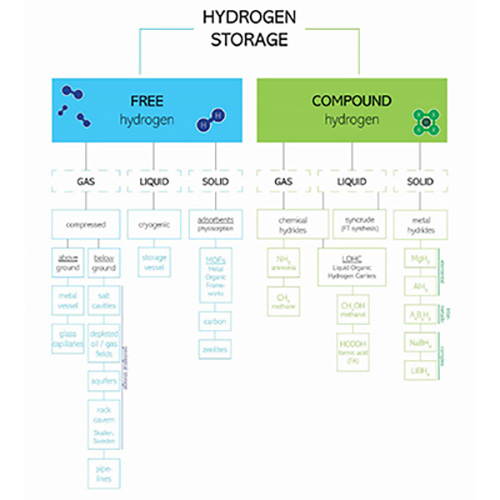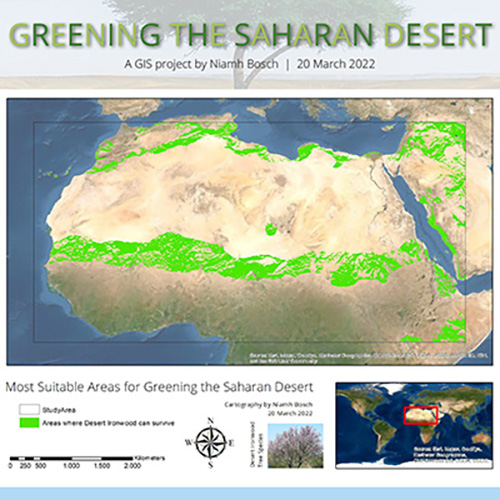The current climate crisis and its effects on life on Earth demands societies to move towards more environmentally friendly behavior, involving the substantial reduction of greenhouse gas emissions (GHGs). For the energy sector, such a shift would encompass leaving the fossil fuel era behind and replacing it with renewable energy sources. A promising option in that regard is the use of hydrogen as an energy carrier, which is free of GHGs when the right production process is used (Green Hydrogen). Hydrogen can be implemented in nearly every sector and for a great variety of applications. However, there are still some barriers to its implementation. Especially hydrogen storage seems to be a relatively immature, but rather pressing issue. Therefore, hydrogen storage technology options are investigated, and an overview is being created in which 6 categories are used: Free H2 Gas (FHG), Free H2 Liquid (FHL), Free H2 Solid (FHS), Compound H2 Gas (CHG), Compound H2 Liquid (CHL), and Compound H2 Solid (CHS). After this categorization, the options are compared based on 4 comparison criteria: technological specifications, technology efficiency & readiness, safety, and financial projections. Combining these criteria leads to a top 3 of best options for hydrogen storage. Besides, a top 3 of best options is being created based on the targets for hydrogen storage set by the US Department of Energy (US DOE). Both assessments lead to the conclusion that ammonia, methanol, liquid & compressed hydrogen storage are the most promising technologies currently available. Everybody knows by now that the Saharan Desert has to deal with the phenomenon of desertification, a form of land degradation in which the desert expands, and infertile land is created. It is essential to look at ways to minimize or even combat this problem. 2019 PWS: CO2 Usage as fuel
2019 PWS: CO2 Usage as fuel  2022 THESIS: Hydrogen Storage Options
2022 THESIS: Hydrogen Storage Options  2022 GIS-project: Greening the Saharan Desert
2022 GIS-project: Greening the Saharan Desert 2019 PWS: CO2 Usage as fuel
2022 THESIS: Hydrogen Storage Options
2022 GIS-project: Greening the Saharan Desert
Preferably as natural as possible. A great example of a project already (partly) executed
and reviewed by professionals is the Great Green Wall.1 The idea is to plant trees along the edges of the Saharan Desert, which will bring back life to a poor landscape. And it is already succeeding! That means that we can continue with this great idea and expand it to other parts of the desert. The main question this project investigates is: “Which parts of the Sahara Desert region are most promising for regreening projects?”.
Timeline
